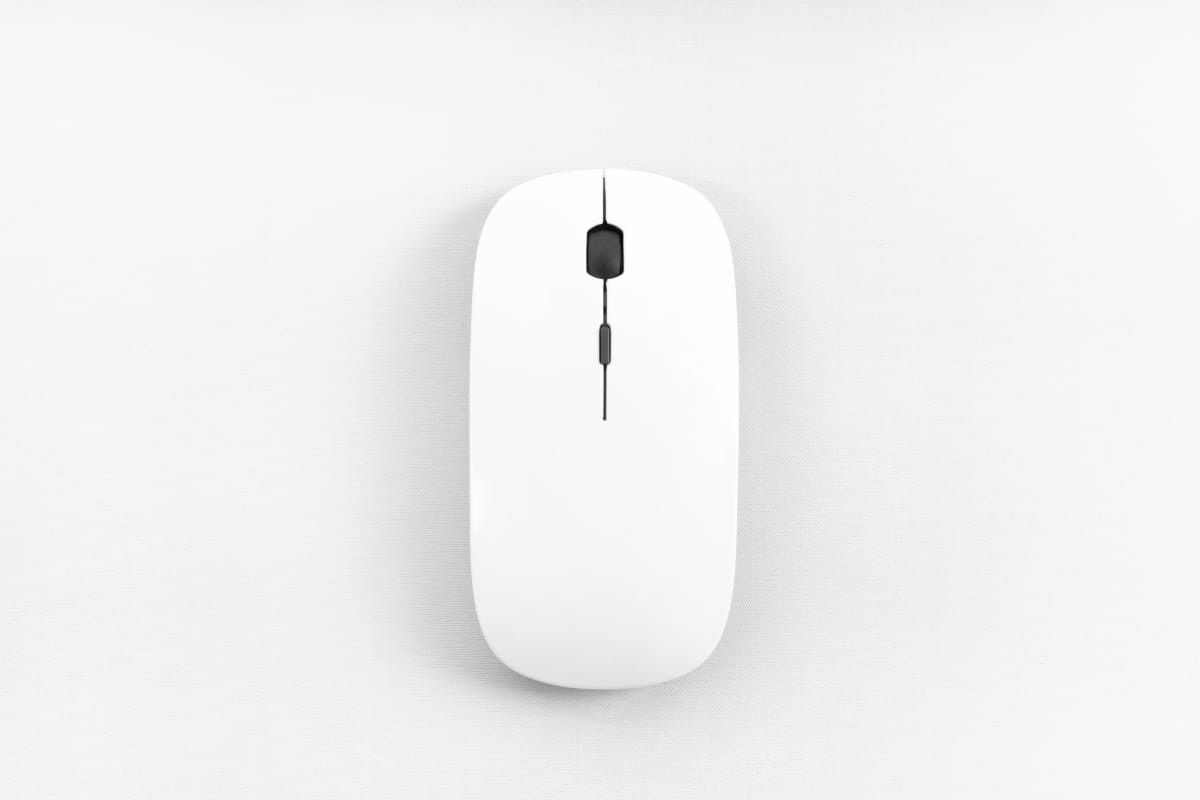If you work at a computer all day, you’ve probably experienced pain of one sort or another from sitting at your desk and using your computer. In this article by licensed chiropractor Steven Jones, find out what you can do to prevent injuring your arms and hands while using a mouse.
As we spend increasing amounts of time at our computer workstations, we need to be aware of how the design and arrangement of our equipment can impact our chances of injury. Computer ergonomics is the study and / or implementation of work station design with the purpose of reducing or eliminating physical stress.
My interest in repetitive stress syndromes began approximately 10 years ago when my practice started seeing a much greater number of people suffering from the effects of computer work.
Despite all of my training and continuing education related to these types of injuries, I quickly realized that short of surgery and radical changes in the patient’s lifestyles, treatment for this type of injury was marginally successful at best.
The real solution had to be prevention and it was going to involve the application of basic ergonomic principals.
This article will address the specifics of injury resulting from postural stress secondary to use of the computer mouse.
RELATED: Select the Right Work Chair for Comfort and Wellbeing
Specifically, the following will be addressed:
1) What repetitive stress injuries are
2) What role do work station ergonomics play in injury
3) How reaching for the mouse sets the stage for injury
4) What are the symptoms of repetitive stress injury
5) How one can avoid mouse reaching injuries
What Exactly is a Repetitive Stress Injury?
Repetitive Stress Injury is a kind of catch all phrase for many conditions. Carpal Tunnel Syndrome, Tenosynovitis / DeQuervain’s Syndrome, Tendonitis, Thoracic Outlet Syndrome, Trigger Finger, Myofascial Pain Syndrome and Chronic Sprain / Strain are some of the actual diagnosis that are rendered in my office.
All of these conditions are serious and in many cases can cause great pain, permanent disability and sometimes loss of employment.
Repetitive Stress Injuries occur from repetitive movements involving a specific set of muscles and joints. RSI injuries are the result of an accumulation of stress and strain that causes irritation, inflammation, and eventually pain or other disability. A good analogy used to characterize the onset of RSI would be the “straws on the camels back” saying.
Initially, RSI affects the soft tissues of the involved joint(s). Soft tissues include muscles, nerves, ligaments and tendons. However, if left untreated for long periods of time, the involved joint can become arthritic and form bone spurs resulting in permanent damage to the joint.
While various occupations ranging from meat cutters to construction workers develop RSIs that result from the typical duties of their professions, the most frequent cause of these injuries involve computer work.
The constant demand of keyboarding and mousing combined with the postural stress of confinement in an office chair with one’s neck and back held in prolonged fixed positions has resulted in an epidemic of injuries that includes hand pain, wrist pain, arm pain, neck pain, back pain and shoulder pain.
Work Station Ergonomics
The study of workstation ergonomics tells us that the objects that are used most often should be located closest to your body and accessed easily, without awkward body positions. Repeated reaching or prolonged postures that involve leaning forward from your chair are particularly stressful and fatiguing.
RELATED: Select the Right Work Desk
Many people are aware of computer ergonomics and thus have an ergonomic mouse. An ergonomic mouse is of little use if it is positioned in an area that requires reaching and stretching in order to operate it. Limiting reaching and stretching for desk items is essential to maintaining a healthy ergonomic environment.
The most frequent complaint that I have seen in my office is due to computer work is the combination of mousing and its’ inherent postural stress.
Most computer stations are designed in a way that involves the worker operating the computer mouse on a pad on the desk. Reaching to the desk for the mouse places direct stress on the joints and soft tissues of the neck, shoulder, elbow, wrist and hand. Additionally, reaching forward for the mouse stresses the lower and middle back.
So How Does Reaching for the Mouse Set the Stage for Injury?
Reaching for the mouse causes you to lean forward in your chair, extend your arm and support the weight of your body through your extended arm. The following section will discuss the particulars of each of these positions.
The stresses placed on the human frame when reaching for the mouse are easily explained. Contrary to popular belief, sitting, which most people believe is relaxing, is hard on the back. Sitting for long periods of time can cause increased pressure on the intervertebral discs of the spine.
In recent years, ergonomisist have told us that proper sitting posture would have us sitting upright with our hips flexed at 90 degrees. As it turns out, the most up to date studies show that a slightly reclined sitting posture with the hips flexed at 100 to 115 degrees is ideal if you have to sit at a desk. If your mouse is not positioned close enough to your body, you will have to reach for it. Reaching for your mouse stresses your back by reducing the angle of your hips.
Next, we have to look at the effects of reaching on the neck and shoulder. When the mouse is being operated at a distance that makes the operator reach, the shoulder extends forward and the shoulder blade abducts (rotates forward). This position stretches the muscle groups that connect the medial portion of your shoulder blade to your spine and the superior portion of your shoulder blade to your neck. In the short term, this stretch aggravates the affected muscle groups causing spasm, fatigue, headaches and stiffness in the neck and shoulder. In the long term, this position creates a condition called a “stretch weakness” resulting in muscular imbalance, trigger points and chronic variations of the conditions listed in the prior sentence.
Lastly, placing the mouse too far away, too low, or too much on one side can cause shoulder, wrist, elbow, and forearm discomfort. When the operator is forced to reach for the mouse, his / her body weight shifts forward and ultimately results in weight bearing stress on the extended arm. Spending prolonged periods of time leaning on an extended arm is an unnatural and destructive posture that will eventually lead to the development of a repetitive stress syndrome; likely resulting disorders would include tendonitis of the wrist, elbow or shoulder.
What are the Common Symptoms?
- Tightness, discomfort, stiffness, soreness or burning in the hands, wrists, fingers, forearms, or elbows
- Tingling, coldness, night pain or numbness in the hands, especially around the base of the thumb
- Clumsiness or loss of strength in the hands
- Pain in the neck, shoulders, wrists, hands or back that is associated with using the computer
How Can You Avoid Injuries Related to Reaching for the Mouse?
The following recommendations are applicable to both home office ergonomics as well as ergonomics in the office.
1) Placing the input device directly in your immediate reach zone offers natural comfort and maximum hand-eye coordination. The use of a platform for the mouse is preferable. Some models of mouse platforms attach directly to your chair.
2) Your chair should have arm rests that are adjustable.
3) Your wrist should be either in a neutral position or flexed slightly downward when operating both your mouse and your keyboard. For this reason, if you select a mouse platform that attaches to your chair, adjustability of the platform is of primary importance.
4) Consider using a high quality office chair with adjustable armrests and lumbar supports. It should also allow some degree of recline.
5) Make sure that the upper arm and elbow are as close to the body and as relaxed as possible for mouse use – avoid overreaching.
6) Hold the mouse lightly, don’t grip it hard or squeeze it. Place the pointing device where you don’t have to reach up or over very far to use it. The closer you can place it to your body the better.
Dr. Steven R. Jones DC (Steve), is a licensed Chiropractor in the state of California. Dr. Jones completed his pre-med education at California State University Hayward. He finished his doctorate work at Palmer College of Chiropractic-West. Dr. Jones has treated his patience for 15 years at his own practice Jones Chiropractic Clinic.






